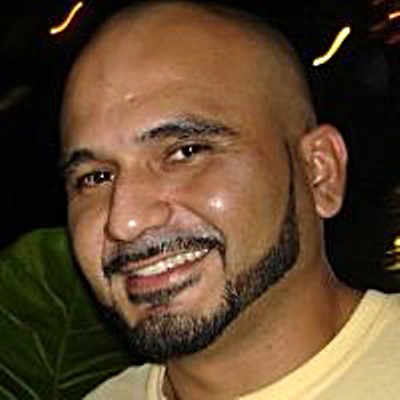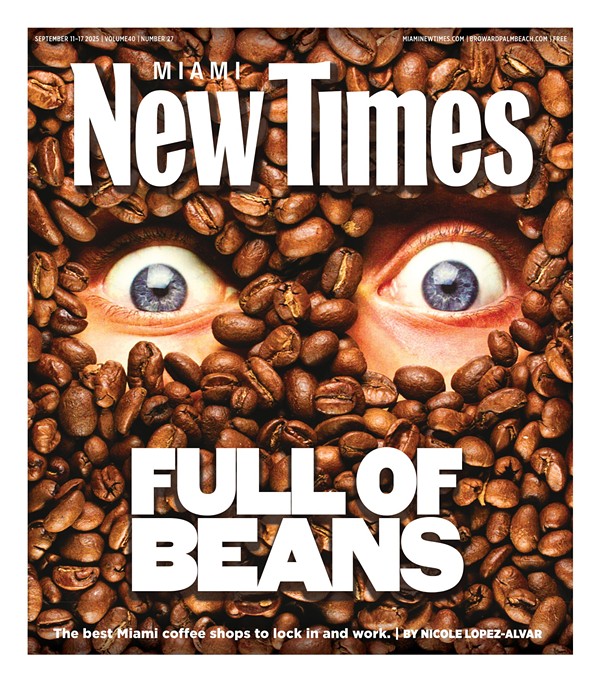This content is sponsored by the Greater Miami Convention & Visitors Bureau.
For more than four decades, Miami Carnival has played an integral role in uniting various Caribbean cultures through its annual celebration of music, dance, costume design and good vibes.
What started in the 1980s as a small diasporic celebration of Caribbean pride has transformed into a massive display of culture, drawing tens of thousands of spectators and participants. And this October, for the 41st edition, organizers say Miami Carnival will be bigger, brighter, and louder than ever.
This year's calendar of events will take revelers on a cultural marathon through the West Indies. Festivities kick off October 4 in Broward County with the Junior Carnival, highlighting the next generation of masqueraders. A few days later, on October 10, revelers will convene at the Central Broward Park Regional Stadium for Panorama, the Pan Jamboree steel band competition.
On October 11, the gathering shifts to the Miami-Dade County Fairgrounds for the high-energy pre-dawn paint, powder, and mud bacchanal known as J’ouvert. Finally, the weeklong party peaks on October 12 with the signature Parade of Bands and Concert — a cultural blowout of costumes, flag-waving, soca, and nonstop dance.
“At Miami Carnival, you hear every type of soca, from comfort to Haitian music to power soca,” says Nisha Felice, a Trinidadian fashion designer. “There are so many different layers to the Miami Carnival. It’s a melting pot of all the islands, which makes it so unique.”
Miami Carnival is expected to draw tens of thousands of people, from parade participants to locals celebrating their roots, says Connie Kinnard, senior vice president of Multicultural Tourism & Development for the Greater Miami Convention & Visitors Bureau.
“Miami Carnival is upbeat, lively fun with the music, the costumes, and the pageantry,” Kinnard says. “It’s an opportunity to experience the Miami flavor of Carnival and see those traditional costumes from around the Caribbean festivals. It brings together several cultural diasporas, people that just like music, like good food, from all across the world to celebrate the Caribbean.”
Mas Bands and the Art of Costuming
At the heart of Carnival is mas — short for masquerade — the collective tradition of donning elaborate costumes and forming bands that parade through the streets. Mas is more than feathers and sequins; it’s an art form and a business, with craftsmen and designers spending months on production.
Among them is Felice, who has been making costumes for Miami Carnival bands such as XIA/Limers and K-Paya. A self-taught designer, she began her craft about seven years ago, mentored by renowned Trinidadian designer Caroline McIntosh. Felice went from producing small accessories to designing full ensembles.
“I made my first costume for a Trini band playing in Miami Carnival,” Felice says. “That was a very interesting experience, because it’s just a merging of cultures outside of Trinidad. I learned that Miami is a melting pot of Caribbean culture.”
For Felice, Miami Carnival differs from traditional island carnivals in Trinidad, Grenada, or Barbados because of the diversity of participants and music. “Working with Caribbean people from every part of the diaspora made my first experience of Miami Carnival very different,” she explains.
Making the costumes themselves is grueling. “These pieces take hours and hours of work,” Felice notes. “An individual costume can take you a month to make.” While most of her costume production is done in Trinidad, she sometimes ships more intricate pieces. For instance, the frames and feathers that make up the elaborate backpacks worn by parade dancers are assembled in Miami.
Still, the exhaustion is worth it. Each October, Miami Carnival is flooded with masqueraders wearing Felice's intricate, colorful designs, moving in rhythm to bass-heavy soca and dancehall. For her, it’s a testament to something greater than fashion: identity.
Culinary Tourism With Caribbean Flavor
The week isn’t all music and mas: At Miami Carnival, food is its own headliner. More than 50 vendors from across the Caribbean diaspora set up at events, offering plates that smell like home for communities spread far from the islands. Expect pepper shrimp from Guyana, griot from Haiti, jerk chicken from Jamaica, conch fritters from the Bahamas, doubles and roti from Trinidad, and pastelitos from the Dominican Republic.
For festival-goers, the food village is where Carnival becomes immersive — a taste of oxtail stew alongside a glass of rum punch tells the story of Miami’s immigrant roots better than any brochure. From fiery curries to sticky-sweet plantains, the culinary experience is as much a reason to attend as the music. Kinnard emphasizes that food strengthens the cultural draw.
“You can get things that you may not find on a normal day of shopping,” she says. “Miami Carnival gives you that authentic bite from all the islands.”
Culture in Every Corner
This year’s celebration also has family in mind. Organizers highlight the Junior Carnival, which gives young children a chance to step out in costume, and the Arts & Crafts Village, where artisans showcase handmade jewelry, paintings, and cultural goods. Museums and local institutions also coordinate special events during Carnival week, weaving together the history of Caribbean migration into South Florida.
Kinnard points out Carnival’s accessibility for all ages and backgrounds. “It’s open for everybody,” she says. “The music is great, and the parade of bands is what I always look forward to.”
Miami Carnival also prioritizes inclusivity, with ADA accommodations for participants with disabilities. Whether that means specially designed viewing areas or accessible entry points, organizers note that the festival is designed to open its doors to everyone.
A Global Stage for Miami Neighborhoods
Each October, Miami becomes a Caribbean world stage. But the cultural imprint of Carnival is visible year-round in neighborhoods like Little Haiti, Liberty City, and North Miami. Haitian Rara processions, Jamaican dancehall sessions, and Trinidadian steel pan rehearsals all feed into the Carnival story. These communities live the rhythms of Carnival daily, while the festival itself is their showcase moment for the world.
Kinnard recalls how Miami Carnival’s global reach surprised her during a work trip abroad: “I traveled to Sierra Leone about three years ago to do a presentation, and one of the people there told me they come to Miami Carnival every year. That showed me the reach this festival has.”
That reach manifests itself in numbers. Miami Carnival routinely attracts between 30,000 and 50,000 people, filling flights, hotels, and restaurants with visitors. It’s not just fun; it’s also a major tourism driver for South Florida, injecting revenue into local businesses from costume designers to street vendors.
What’s at Stake Each Year
Miami Carnival doesn’t stand still. Music releases drive new costumes and experiences each year. “Every Carnival, there’s always new music and new costumes,” says designer Felice. “It’s always about the novelty. You want a new costume every year. You want a new hot song every year.”
For the Miami version, Carnival has evolved from an immigrant community event to an internationally recognized festival. But at its beating heart are the people — designers like Felice and the hordes of masqueraders who carry their islands on their backs and in their flags.
For one weekend, every beat of the drum, every plume of feathers, every plate of curry goat tells the same story: Home is here, and it’s loud, proud, and Caribbean.
“It has grown because it’s not just for people with Caribbean roots,” Kinnard concludes. “It’s for everybody who loves culture, music, and coming together.”

















